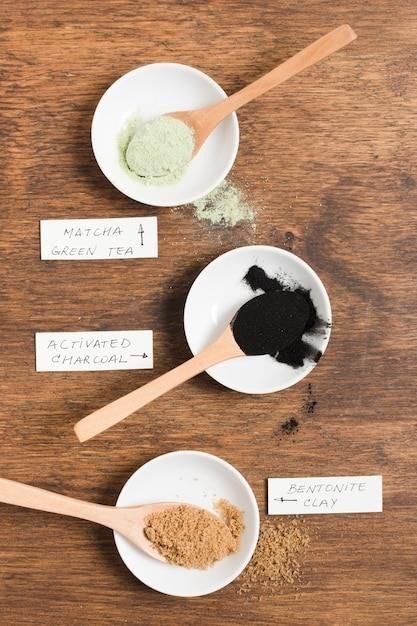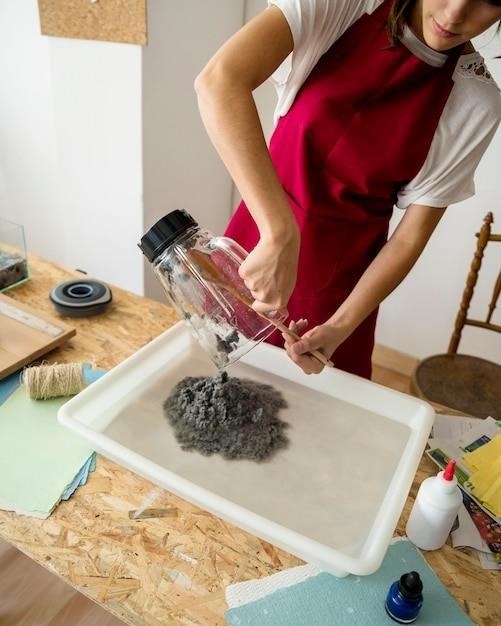
Guide Coat Powder⁚ A Comprehensive Guide
This guide explores guide coat powder, a crucial tool in automotive refinishing․ Learn about its various applications, types, application methods, benefits, and safety precautions․ Discover how it compares to other methods and troubleshoot common issues․ We’ll also cover where to purchase this essential product for achieving a flawless finish․
What is Guide Coat Powder?
Guide coat powder is a finely milled, typically black, powder used in automotive and marine refinishing to highlight imperfections on surfaces before painting․ Unlike liquid guide coats, it dries instantly upon application, eliminating drying time․ This dry powder, often carbon-based, is applied to surfaces such as fillers, primers, paints, and gelcoats․ Its primary function is to make minute surface irregularities, like pinholes, scratches, and sanding marks, easily visible under different lighting conditions․ The high contrast of the black powder against lighter-colored surfaces makes even the smallest imperfections readily apparent․ This allows for precise sanding and ensures a smooth, flawless finish before the final coat of paint․ Different brands offer varying formulations and packaging, including cartridges with applicators and loose powder․
Applications of Guide Coat Powder in Automotive Refinishing
Guide coat powder finds extensive use throughout the automotive refinishing process․ Before priming, it helps identify imperfections in body filler, revealing low spots, pinholes, and other surface irregularities that need addressing before proceeding․ This prevents costly rework later․ After priming, a guide coat application reveals imperfections in the primer itself, ensuring a perfectly smooth surface for the final paint coat․ It’s equally valuable in wet or dry sanding, clearly highlighting areas requiring further attention․ The powder’s instant drying time eliminates delays, and its easy removal with sanding prevents clogging․ Its versatility extends beyond automotive applications; it can be used on marine fillers, paints, and gelcoats, showcasing its broad utility in various surface preparation scenarios․ Using a guide coat is a crucial step for professional-level results․
Types and Brands of Guide Coat Powder
Guide coat powder is primarily available in black, offering excellent contrast against lighter-colored primers and fillers, making imperfections readily visible․ The most common forms include dry powder cartridges, often supplied with applicator pads for even distribution․ Aerosol spray versions also exist, providing a quick and convenient application method, ideal for larger surfaces; Several reputable brands manufacture guide coat powder, including 3M, which offers cartridges and is frequently cited for its quality and performance․ Other brands such as Dura-Gold and SEM Products are also popular choices, often offering larger quantities in kits that include applicator tools․ The choice between a cartridge and spray application depends largely on personal preference and the scale of the project, with larger projects often benefiting from the efficiency of aerosol applications․ Regardless of the brand or form, the core function remains consistent⁚ to highlight surface imperfections for optimal preparation․
How to Apply Guide Coat Powder⁚ A Step-by-Step Guide
Applying guide coat powder is a straightforward process․ For dry powder, begin by ensuring the surface is clean and dry․ If using a cartridge system, follow the manufacturer’s instructions for attaching the applicator pad․ Gently apply the powder to the surface using light, even strokes, ensuring complete coverage of the area being inspected․ Avoid heavy application, as this can obscure subtle imperfections․ For aerosol sprays, shake the can well before use․ Hold the can at a consistent distance (usually around 6-8 inches) and apply several thin coats, allowing each coat to dry briefly before applying the next․ Once applied, allow the powder to dry completely before proceeding with sanding․ Always wear appropriate personal protective equipment (PPE), including a respirator mask to prevent inhalation of the powder․ Proper application ensures that even the smallest imperfections are easily visible during the sanding process, leading to a higher quality final finish․
Benefits of Using Guide Coat Powder
Utilizing guide coat powder offers several key advantages in automotive refinishing and other surface preparation tasks․ Its primary benefit is the ability to quickly and easily highlight imperfections such as pinholes, scratches, and low spots in fillers, primers, or paint․ This dramatically improves the efficiency of sanding, preventing over-sanding and reducing costly rework․ The instant drying time eliminates waiting periods associated with liquid guide coats, streamlining the workflow․ Guide coat powder’s compatibility with various substrates (automotive and marine fillers, primers, paints, and gel coats) makes it a versatile tool applicable across diverse projects․ The ease of application and removal further enhances its practicality, minimizing cleanup time and effort․ The high visibility of the contrast provided by the dark powder against lighter colored substrates aids in precise identification of surface imperfections, ensuring a superior final finish․ Ultimately, using guide coat powder translates to cost savings, time efficiency, and improved quality in the overall finishing process․ By enabling immediate identification of flaws, it significantly reduces the need for correction work, resulting in a more professional outcome․
Comparison with Other Surface Preparation Methods
Guide coat powder offers distinct advantages over other surface preparation methods․ Unlike liquid guide coats, it requires no drying time, accelerating the workflow significantly․ Traditional methods relying solely on visual inspection often miss subtle imperfections, leading to potential issues after final painting․ In contrast, the high contrast of guide coat powder instantly reveals even minor flaws, ensuring thorough sanding and a smoother final surface․ Compared to more complex and time-consuming techniques, guide coat powder provides a simple, efficient, and cost-effective solution․ While some might use specialized tools or techniques for defect detection, guide coat powder offers a straightforward, widely available, and easy-to-use alternative; The ease of application and removal surpasses the more laborious cleaning processes associated with some liquid-based methods․ The ability to use guide coat powder on various substrates (fillers, primers, paints) broadens its utility compared to methods restricted to specific materials․ In summary, its speed, accuracy, and versatility position guide coat powder as a superior choice for many surface preparation needs in the automotive refinishing and similar fields․
Troubleshooting Common Issues with Guide Coat Powder
One common issue is uneven application, resulting in inconsistent highlighting of imperfections․ This can be caused by improper application technique or using a clogged applicator․ Ensure the applicator is clean and distribute the powder evenly with light, consistent strokes․ Another problem is clogging of sandpaper during sanding․ This is often due to using too much guide coat or sanding too aggressively․ Apply a thin, even coat and use a light touch when sanding․ If the guide coat is difficult to remove, it may indicate the use of an incompatible primer or paint․ Check compatibility before application․ Sometimes, the guide coat may not adequately highlight imperfections․ This might stem from using insufficient powder or inadequate lighting․ Ensure ample powder is applied and use bright lighting to enhance visibility․ Finally, poor adhesion can result from applying the powder to a dirty or oily surface․ Always clean the surface thoroughly before applying the guide coat․ By addressing these issues proactively, you can ensure the effective and efficient use of guide coat powder․
Safety Precautions When Using Guide Coat Powder
When working with guide coat powder, prioritize safety to prevent potential health hazards and ensure a smooth workflow․ Always wear appropriate personal protective equipment (PPE), including a respirator to prevent inhalation of the powder․ Fine particles can irritate the respiratory system, so proper respiratory protection is paramount․ Eye protection, such as safety glasses, is also essential to shield your eyes from potential splashes or airborne particles․ Gloves should be worn to prevent skin irritation or allergic reactions that might occur from prolonged skin contact with the powder․ The work area should be well-ventilated to minimize dust accumulation and improve air quality․ Consider using a dust collection system or working outdoors to further reduce airborne particles․ After application, carefully clean up any residual powder to prevent accidental ingestion or contact․ Dispose of the waste materials responsibly according to local regulations․ Adhering to these safety measures ensures a safe and healthy working environment while using guide coat powder․

Where to Buy Guide Coat Powder
Acquiring guide coat powder is straightforward, with several avenues available depending on your needs and preferences․ Major online retailers like Amazon offer a wide selection of brands and sizes, often providing convenient home delivery․ This option allows for price comparisons and easy access to customer reviews, helping you make an informed decision․ Alternatively, you can explore local auto parts stores, such as O’Reilly Auto Parts, which often stock guide coat powder alongside other automotive supplies․ Visiting a physical store allows for immediate purchase and provides the opportunity to seek advice from knowledgeable staff regarding product selection and usage․ Specialized automotive paint and body shops are another excellent resource; they usually carry a broader range of professional-grade products, including various brands and sizes of guide coat powder․ For larger projects or bulk purchases, contacting industrial supply companies directly might provide cost-effective options․ Remember to compare prices and product specifications across different suppliers before making a final decision to ensure you get the best value for your money․
